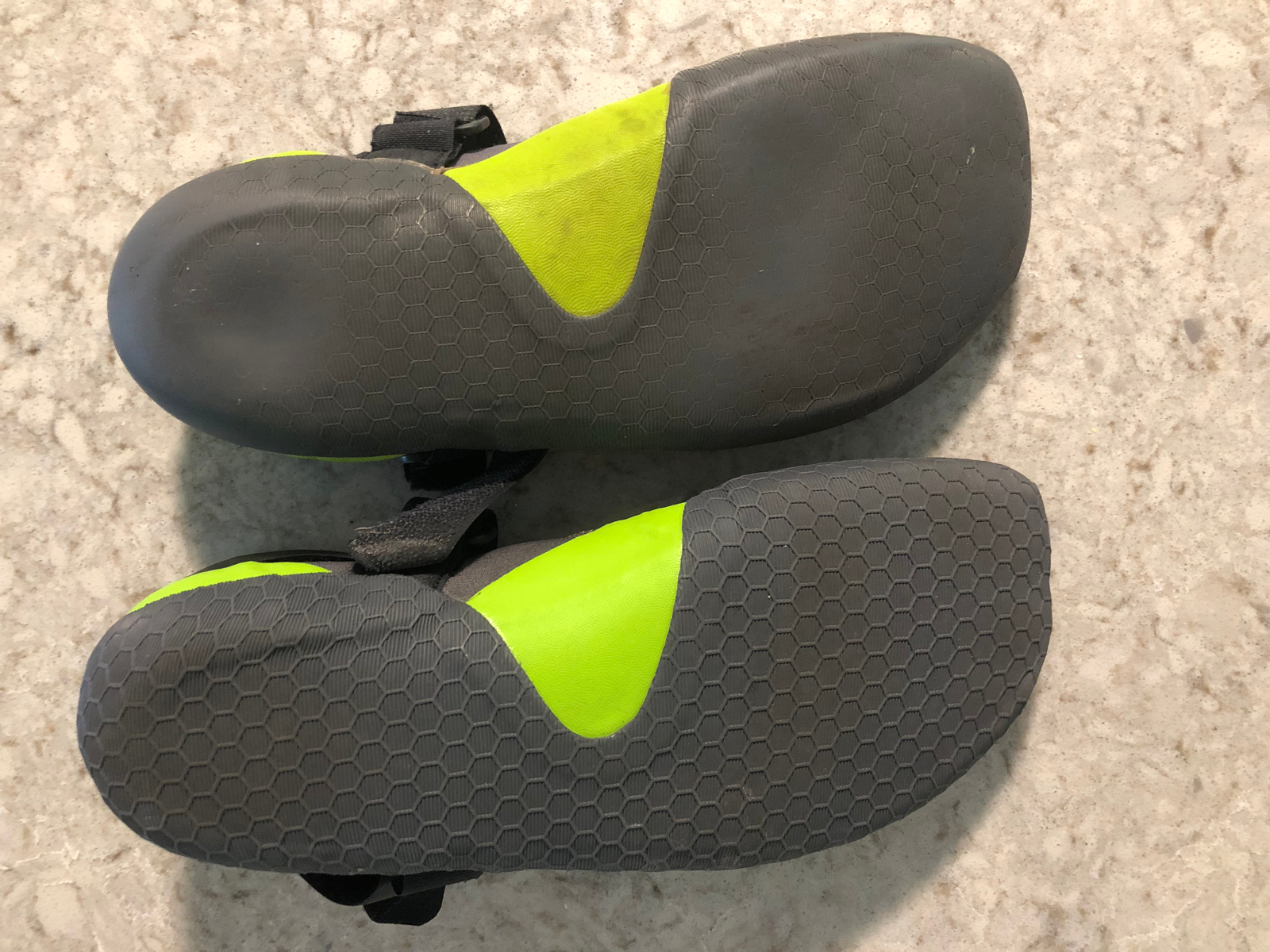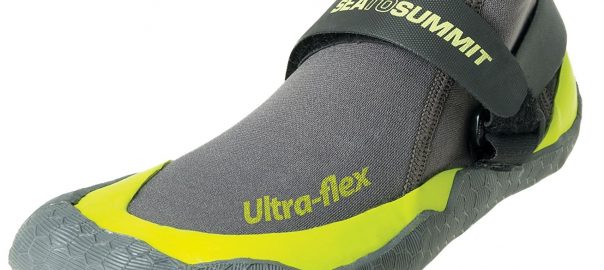As a kayaker, the quest to find comfortable and practical shoes is something that most people spend a good deal of time(and possibly money on.) Among whitewater boaters, actual shoes like Astral’s Brewer are often quite popular. Others prefer dive booties or booties more geared towards kayaykers, like NRS’s Freestyle or Desperado water shoe.
I’ve not tried any sneakers yet, but have tried several types of sandals, along with high top and low top booties of various brands. However, at least for ocean work, my favorite so far has been the Sea to Summit Ultra Flex Booties, which are a mix of 3MM neoprene and rubber.
What I like most about them is that they are low profile and thin, but still sturdy enough that you can hop out on an oyster bed or walk across a gravel parking lot and not worry too much about slicing up your foot.
Recently, I gave up half of my old pair to the Ocean Gods and so have been using a pair of NRS Kicker Remix’s for the past month, but they are just a bit too thick.
The Remix’s, as well as other booties I’ve tried, have a very thick sole, which wraps around the toe and heel. This can be great in terms of protection, but don’t have a lot of flex to them and add some length onto the booties. So, in a smaller cramped boat, they tend not to be very comfortable to me and I can’t move my feet around as much as I would like.
The Ultra Flex Booties, on the other hand, are thin and while the toe and heal are also surrounded by the rubber sole, the rubber is much thinner and more flexible, so that they are close to being barefoot. The thinness of the Sea to Summit booties, compared to most other booties I’ve tried, gives me a lot more toe room in the boat.
Like most things, they aren’t the best shoe for all situations, specifically river whitewater or very slick/rocky areas, but are great for ocean/coastal play.
The Pros:
As stated above, the biggest pro is how thin these are. The sole is made of rubber, but is very thin and flexible. When you are in a low-volume boat with limited foot room, makes a world of difference.
Other booties that I own or have seen have a much thicker sole, thicker neoprene and/or additional insulating material. This adds a lot of size to the shoe and ends up being pretty uncomfortable to me after even a relatively short time in my touring/surfing boats. This is less of an issue in my Dagger Alchemy, but in my NRS and Impex boats, which are smaller height/volume wise, normal booties just end up being too rigid and big.
The Cons:
The biggest downside to the Ultra Flex Booties is that the sole is slick, with almost no traction/grip. The marketing on the package specifically describes the sole as having a lot of grip, but that really isn’t the case. While it does have a raised imprinted design, they provide little traction on wet slick surfaces, and it is thin enough that it will wear out relativity quickly when walking on any surface other than perhaps sand.
I’m sure works well for gripping a surface like a stand up paddle board, but it has little traction on little rocks or other similar surfaces. You will slide around if you hop out and I’m always very cautious when getting out on a slick surface when wearing them. When I went to Baja California last year, I purchased a pair of NRS Kickers, as I wanted something similar, but with a good bit more traction for all the rock/slick areas we would encounter out there. I’m not super found of the Kickers, but they do have decent traction.
You can see in the below picture what the tread looks like on a new pair vs a much used pair:

Another downside is that, like most(all?) booties, they hold in water and don’t drain. So, the first time you hop out of your boat in water deeper than your ankle, you are going to have wet feet.
Of course, this isn’t that much of an issue when wearing a drysuit, but otherwise, over the course of a long day of kayaking, your feet are going to get wet and stay wet. I usually drain them out prior to getting into my boat, as well as keeps some water out of your boat, but even still your feet will be wet/damp. Of course, it isn’t generally cold, as the neoprene works well for keeping you warm, but if you don’t like wet feet, the Ultra Flex booties might not be for you.
They are also thin, which is my main reason for liking them, but if you are going to be doing a lot of walking, they aren’t great. A good metric for booties is whether you can walk across a gravel parking lot without thinking too much about where you step and these pass that test for the most part, but are on the border and not comfortable to walk long distances in.
Overall Rating
Despite not being good choices for river work, due to not having much, or really any, traction, these are my go to booties when surfing at the beach or doing a coastal paddle. I also wear them at the lake, although do still have to make a conscious effort to avoid rocks and other slick surfaces.
If you are going to wear them over your drysuit, you will probably want to get one size larger than normal, so you have room for the drysuit’s socks.
Rating: I’d Buy it Again!
